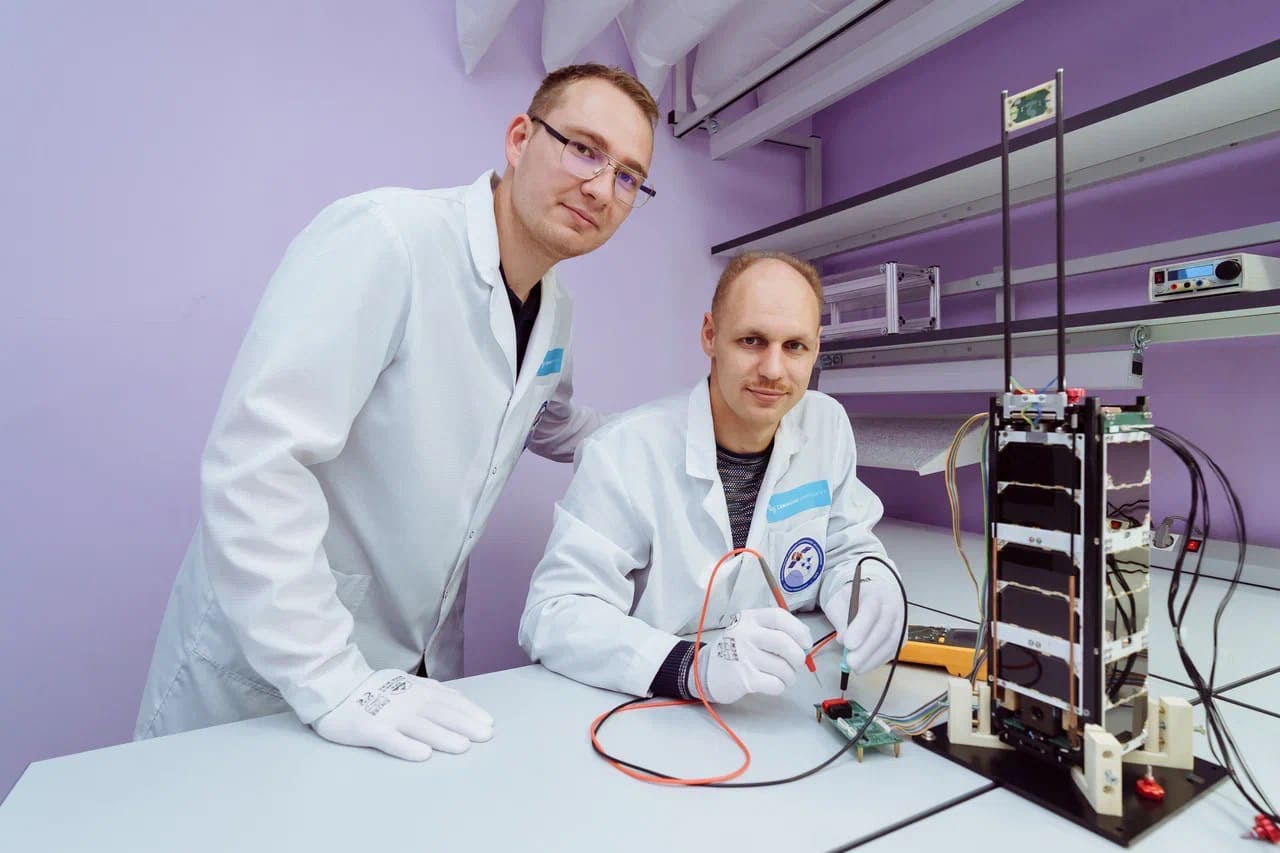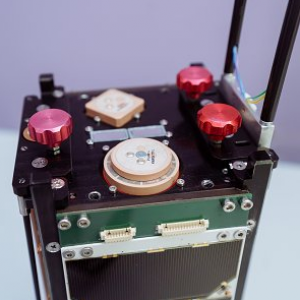On May 5, 2025, the SamSat-Ionosphere small spacecraft (SSC) celebrated six months of successful operation in low-Earth orbit.

The SamSat-Ionosphere spacecraft was created on the basis of the SamSat platform, which was developed and manufactured at the Interuniversity Department of Space Research of Samara University and completed its flight training in 2023 as part of the SamSat-ION SSC mission.
Over the past six months, flight and design tests of the SSC have been successfully conducted in orbit, confirming the strength and operational characteristics of structural elements and onboard systems in space flight; the correctness of the developed onboard and ground software has been confirmed; the technology for estimating the parameters of the SSC orbit by Doppler frequency shift has been developed; the technology for operational monitoring of the magnetic field over the territory of Russia has been introduced with the transfer of scientific measurements twice a day to the thematic customer — the Institute of Applied Geophysics named after Fedorov of Roshydromet.
The scientific equipment complex of the SamSat-Ionosphere SSC includes three instruments: a plasma parameter sensor (jointly developed with the Institute of Applied Physics of the Russian Academy of Sciences), a receiver of navigation signals for scientific purposes, and a remote magnetometric system (both developed by Samara University). The work of the experimental plasma parameter sensor is currently being analyzed by scientists from the Institute of Applied Physics of the Russian Academy of Sciences, who are the ideologists of this unique instrument.
In December 2024, a trial activation of the receiver of navigation signals for scientific purposes was carried out. The telemetry information confirmed the receiver's normal activation and deactivation, and the receiver's status and software identifier were received. Since the beginning of February 2025, the SamSat-Ionosphere SSC has been providing operational monitoring of the magnetic field over the territory of Russia. The usefulness of magnetometric measurements coming from the SamSat-Ionosphere SSC and their practical use have been confirmed by the Director of the Institute of Applied Geophysics named after Fedorov, Repin A.Yu. at the meeting of the section "Solar-terrestrial communications and space plasma" of the RAS Space Council on 18.04.2025.
Over the past six months, the Nanosatellite Mission Control Center of the Interuniversity Department of Space Research of Samara University conducted more than 1,100 communication sessions with the SamSat-Ionosphere SSC, and received more than 15,000 messages from the SSC board containing scientific and service information. Telemetry confirms that the onboard systems are working normally, without any problems. In addition, amateur radio stations from twenty-two countries were able to receive the beacon signal from the SamSat-Ionosphere SSC during this time: Russia, the Republic of Belarus, Georgia, China, India, Japan, the Czech Republic, Austria, Spain, Italy, France, the United States, Great Britain, Brazil, Peru, Greece, Poland, Moldova, Taiwan, the Philippines, Indonesia, and Cuba. From time to time, the SSC pleases radio amateurs with special congratulatory messages dedicated to significant dates. For example, a festive broadcast was successfully broadcast on board for Cosmonautics Day on April 12, and a congratulatory message for Victory Day is scheduled to be broadcast from May 5 to May 19.
At the moment, the SamSat-Ionosphere SSC continues to carry out a scientific program and transmit data on the state of the Earth's magnetosphere and ionosphere, as well as take photographs of the Earth's surface and outer space on a low-resolution technological camera. And despite the harsh conditions of the space environment in which the SamSat-Ionosphere SSC continuously performs its work, it cheerfully reports to the mission control center at every communication session: "Six months in orbit — the flight is normal!"
 RU
RU  EN
EN  CN
CN  ES
ES 